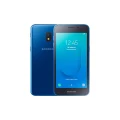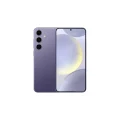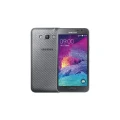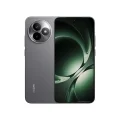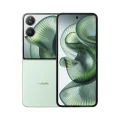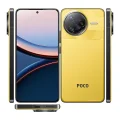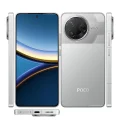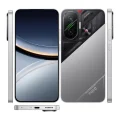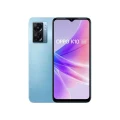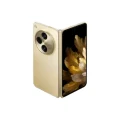- Home
- All Products
- Mobiles and Tabs
- Samsung Galaxy Tab S7
Samsung Galaxy Tab S7
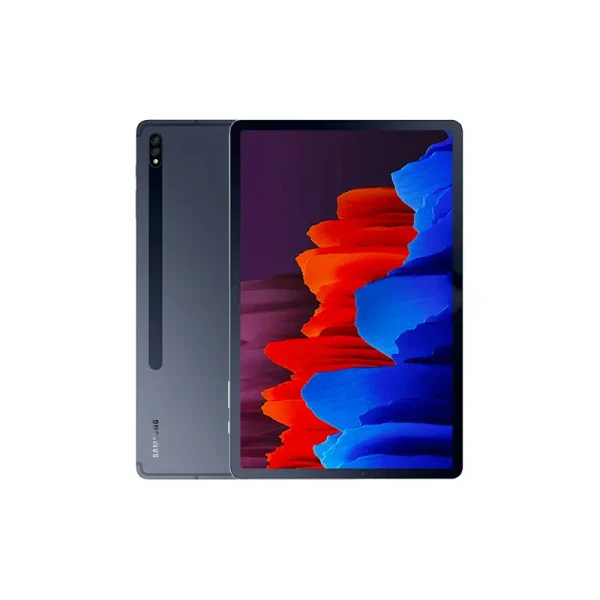

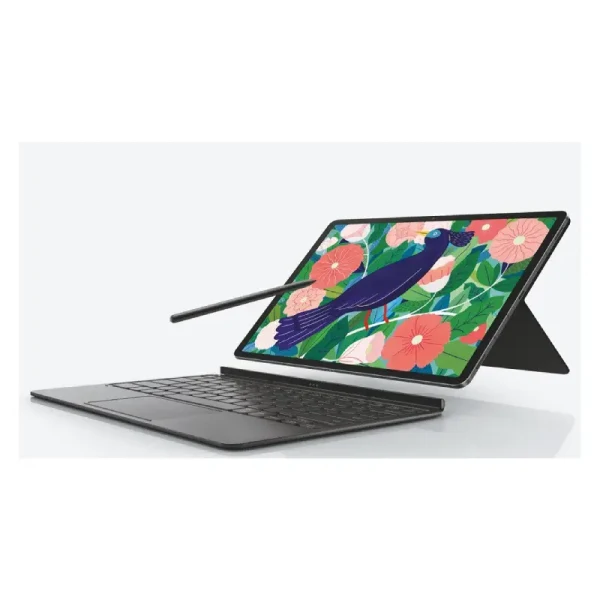
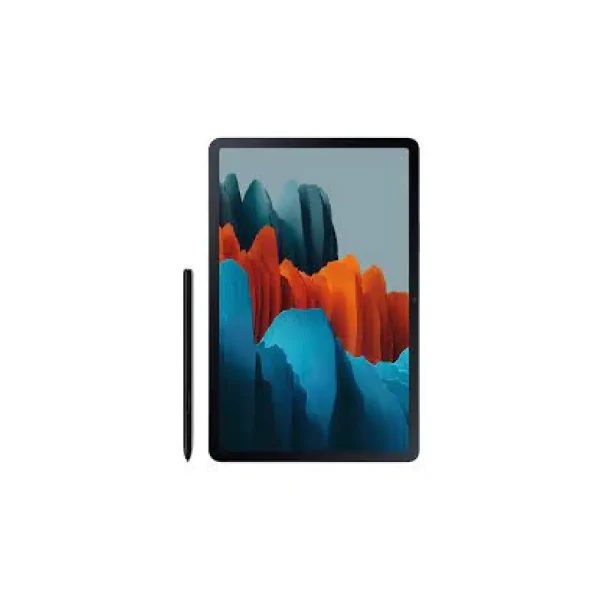
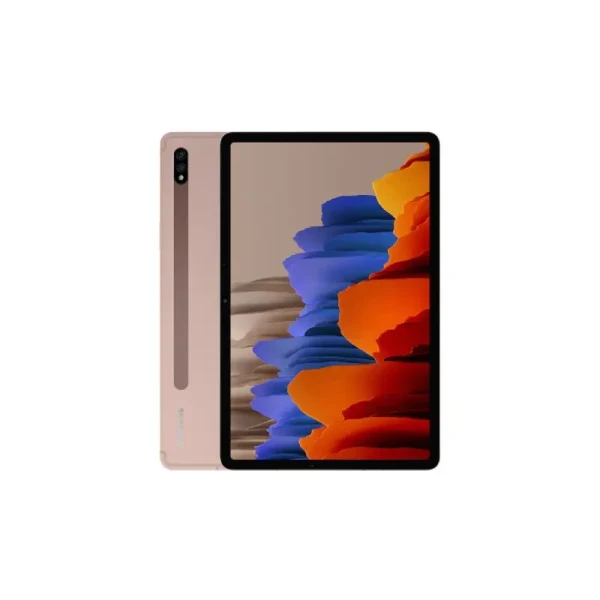
-
Battery: Li-Po 8000 mAh
-
RAM: 6GB, 8GB, 8GB
-
Storage: 128GB, 256GB, 512GB
-
Display: TFT LCD, 11.0 inches
-
Camera: Rear 13 MP+5 MP, and Front 8 MP
-
OS: Android 10, upgradable to Android 13, One UI 5.1
Full Specifications
Price
| Official | 57990 BDT 6GB/128GB Approx. |
General
| Model | Samsung Galaxy Tab S7 |
| Announced | 2020, August 05 |
| Released | 2020, August 21 |
| Status | Available |
Design
| Dimensions | 253.8 x 165.3 x 6.3 mm (9.99 x 6.51 x 0.25 in) |
| Weight | 498 g (Wi-Fi), 500 g (LTE), 502 g (5G) (1.10 lb) |
| SIM <strong>SIM</strong> (Subscriber Identity Module) is a small card that contains mobile network subscriber's account information. This allows the phone using the card to attach to a mobile network. The SIM card is most commonly associated with GSM and UMTS mobile networks. Moving a SIM card from one phone to another allows a subscriber to switch mobile phones without having to contact their mobile network carrier. SIM cards can also be used by a phone to store limited amounts of data, such as phone numbers and text messages. |
Nano-SIM Stylus support, 9ms latency (Bluetooth integration, accelerometer, gyro) |
| Colors |
Mystic Black, Mystic Bronze, Mystic Silver, Phantom Navy |
Display Specification
| Display Type <strong>Display Technology => </strong> A number of display technologies and types used in mobile phones => TFT (Thin Film Transistor), IPS (In-Place Switching), OLED (Organic Light Emitting Diode), AMOLED (Active-Matrix Organic Light-Emitting Diode), Super AMOLED (an even advanced version of AMOLED), Resistive Touchscreen (Resistive touchscreens contain two layer of conductive material with a very small gap between them which acts as a resistance), Capacitive Touchsceen (Capacitive touchscreen technology consists of a layer of glass coated with a transparent conductor) | TFT LCD |
| Size | 11.0 inches, 350.9 cm2 |
| Resolution | 1600 x 2560 pixels, 16:10 ratio |
| Refresh Rate | 120Hz |
| Pixel Density <strong>Pixel Density (PPI)</strong> is refers to the concentration of pixels on a particular display, measured in pixels per inch (ppi). Pixel density is calculated by dividing the diagonal pixel resolution of a display by its diagonal size, higher pixel density better display quality. | 274 ppi density |
| Features |
HDR10+ 83.6% screen-to-body ratio |
Platform
| Operating System <strong>OS => </strong> Every computer system run on a base software called Operating System (OS). Operating System controls all basic operations of the computer (such as smartphone, PDAs, tablet computers and other handheld devices). The Operating System allows the user to install and run third party applications (apps), apps are used to add new functionality to the device. | Android 10, upgradable to Android 13, One UI 5.1 |
| Chipset <strong>Chipset</strong> is a group of integrated circuits designed to perform one or a more dedicated functions, often with real time computing constraints, Popular smartphones are equipped with more advanced embedded chipsets that can do many different tasks depending on their programming. | Qualcomm SM8250 Snapdragon 865 5G+ (7 nm+) |
| CPU <strong>CPU</strong> (Central Processing Unit) mostly known as processors, CPU processes instructions in order to carry out certain functions that make your device operate properly. Processors are often described as the brain of computers, smartphones and tablets, Smartphones and tablets rely on processors to carry out their every task, Processors are an incredibly important factor in selecting any type of computing device, including your smartphone. | Octa-core (1x3.09 GHz Cortex-A77 & 3x2.42 GHz Cortex-A77 & 4x1.80 GHz Cortex-A55 |
| GPU <strong>GPU</strong> (Graphics Processing Unit) is a single-chip processor designed to rapidly manipulate and alter memory to accelerate the creation of images in a frame buffer intended for output to a display, This includes things such as lighting effects, object transformations, and 3D motion. | Adreno 650 |
Main Camera
| Camera Setup | Dual |
| Resolution |
13 MP, f/2.0, 26mm (wide), 1/3.4&quot;, 1.0µm, AF 5 MP, f/2.2, 12mm (ultrawide), 1.12µm |
| Features |
HDR, panorama |
| Video | 4K@30fps |
Selfie Camera
| Camera Setup | Single |
| Resolution |
8 MP, f/2.0, 26mm (wide), 1/4&quot;, 1.12µm |
| Video | 1080p@30fps |
| Features | - |
Network & Connectivity
| Technology | GSM / HSPA / LTE / 5G |
| Speed | HSPA 42.2/5.76 Mbps, LTE-A (6CA) Cat20 2000/150 Mbps, 5G |
| Wi-fi <strong>Wi-Fi</strong> is a popular wireless networking technology using radio waves to provide high-speed network connections that allows devices to communicate without cords or cables, Wi-Fi is increasingly becoming the preferred mode of internet connectivity all over the world. | Wi-Fi 802.11 a/b/g/n/ac/6, dual-band, Wi-Fi Direct |
| Bluetooth <strong>Bluetooth</strong> is a wireless communications technology for exchanging data between mobile phones, headsets, computers and other network devices over short distances without wires, Bluetooth technology was primarily designed to support simple wireless networking of personal consumer devices. | 5.0, A2DP, LE |
| NFC <strong>NFC</strong> (Near field communication) is a set of standards for smartphones and similar devices to establish peer-to-peer radio communications with each other by touching them together or bringing them into proximity, usually no more than a few inches. | No |
| Positioning |
GPS, GLONASS, BDS, GALILEO |
| FM Radio | No |
| USB | USB Type-C 3.2, magnetic connector |
| 2G Network |
GSM 850 / 900 / 1800 / 1900 |
| 3G Network |
HSDPA 850 / 900 / 1700(AWS) / 1900 / 2100 |
| 4G Network |
1, 2, 3, 4, 5, 7, 8, 12, 13, 20, 25, 26, 28, 38, 40, 41, 66 |
| 5G Network |
1, 3, 5, 7, 8, 20, 28, 40, 77, 78 SA/NSA |
Battery
| Battery Type <strong>Battery Type => </strong> Cell phones run on various kinds of batteries depending on the manufacturer, phone size or shape and features. There are basically four types of cell phone batteries => Lithium Polymer, Lithium Ion, Nickel Metal Hydride and Nickel Cadmium. | Li-Poly (Lithium Polymer) |
| Capacity <strong>Battery Capacity</strong> is a measure (typically in Amp-hr) of the charge stored by the battery, and is determined by the mass of active material contained in the battery. The battery capacity represents the maximum amount of energy that can be extracted from the battery under certain conditions. | 8000 mAh |
| Removable | No |
| Charging |
45W wired |
| Wireless Charging <strong>Wireless Charging</strong> (Inductive Charging) uses an electromagnetic field to transfer energy between two objects. This is usually done with a charging station. Energy is sent through an inductive coupling to an electrical device, which can then use that energy to charge batteries or run the device. | No |
Multimedia
| Loudspeaker | Yes, with stereo speakers (4 speakers) |
| Audio Jack | No |
| Audio Features |
Tuned by AKG |
Storage
| Card Slot <strong>Memory Card Slot</strong> is a special slot for inserting a memory card. Memory cards allow you to expand the phone's built-in memory, A memory card (sometimes called a flash memory card or a storage card) is a small storage medium used to store data such as text, pictures, audio, and video, for use on small, portable or remote computing devices such as mobile phones, mp3 players, digital cameras. | microSDXC (dedicated slot) |
| Internal Storage <strong>Internal Storage</strong> is a data storage space (flash memory) mostly used in smartphones, tablets and other electronic devices where operating system, apps, music, photos, videos, files and other user data Is stored. |
128GB 6GB RAM, 256GB 8GB RAM, 512GB 8GB RAM UFS 3.0 |
Sensors
| Fingerprint | Yes (side-mounted) |
| Other Sensors | accelerometer, gyro, proximity, compass, Samsung DeX |
About the Samsung Galaxy Tab S7
The Samsung Galaxy Tab S7, launched in August 2020, is a powerful Android tablet that blends productivity and entertainment in a slim and stylish package. It features an 11-inch LTPS TFT display with a 120Hz refresh rate, offering smooth visuals and vibrant colors despite not being AMOLED like the Plus model. Powered by the Qualcomm Snapdragon 865+ chipset, and paired with up to 8GB RAM and 512GB storage, the Tab S7 delivers fast performance for gaming, multitasking, and media use. It includes the S Pen with ultra-low latency, making it excellent for note-taking, drawing, or editing.
The tablet runs on Android with Samsung’s One UI, supports Samsung DeX, and boasts a large 8,000mAh battery with 45W fast charging. With quad speakers, a sleek metal design, and optional LTE/5G versions, the Galaxy Tab S7 is ideal for students, creators, and business users looking for a versatile and premium Android tablet.
Main Key Features
- Display: 11-inch LTPS TFT, 2560 x 1600 resolution, 120Hz refresh rate
- S Pen: Included, low-latency with Air Actions
- Processor: Qualcomm Snapdragon 865+ (7nm+)
- Memory: 6GB/8GB RAM, 128GB/256GB/512GB storage, microSD up to 1TB
- Cameras: Rear: Dual – 13MP (main) + 5MP (ultrawide), Front: 8MP (selfie/video call)
- Battery: 8000mAh with 45W fast charging
- Audio: Quad stereo speakers tuned by AKG, Dolby Atmos
- Connectivity: Wi-Fi 6, Bluetooth 5.0, USB-C 3.2, LTE/5G variant available
- Samsung DeX: Wired and wireless DeX mode supported
- Other Features: Side-mounted fingerprint sensor, Face unlock, Android 10 (upgradable)
Pros & Cons
Pros
- Smooth 120Hz display
- Excellent performance with Snapdragon 865+
- Comes with S Pen (low-latency writing)
- Quad speakers offer immersive audio
- Expandable storage via microSD
- Samsung DeX support for PC-like interface
- Long battery life with fast charging
- Premium build quality
Cons
- TFT screen (not AMOLED)
- No headphone jack
- Fast charger (45W) not always included in the box
- Android tablet apps are still limited
- Keyboard accessory sold separately
Opinion
The Samsung Galaxy Tab S7 is a solid and powerful Android tablet, perfect for productivity, creative tasks, and media consumption. While it lacks the AMOLED display of the Tab S7 Plus, it makes up for it with a high refresh rate, top-tier performance, and excellent S Pen integration. A great iPad Pro alternative for Android fans.
See Another Model:
FAQs about Samsung Galaxy Tab S7
Q: Does the Tab S7 come with the S Pen?
A: Yes, the S Pen is included in the box.
Q: What is the difference between Tab S7 and Tab S7 Plus?
A: The Tab S7 has a smaller 11″ TFT display, while the S7 Plus has a 12.4″ AMOLED display. Also, the fingerprint sensor is side-mounted in Tab S7 vs in-display in S7 Plus.
Q: Does it support fast charging?
A: Yes, up to 45W fast charging, though you may need to buy the charger separately.
Q: Can I expand the storage?
A: Yes, it has a microSD card slot supporting up to 1TB.
Q: Is there a 5G version?
A: Yes, depending on region and model, a 5G variant is available.
Q: What is the software support?
A: It ships with Android 10 and is upgradeable to Android 13 with One UI.

